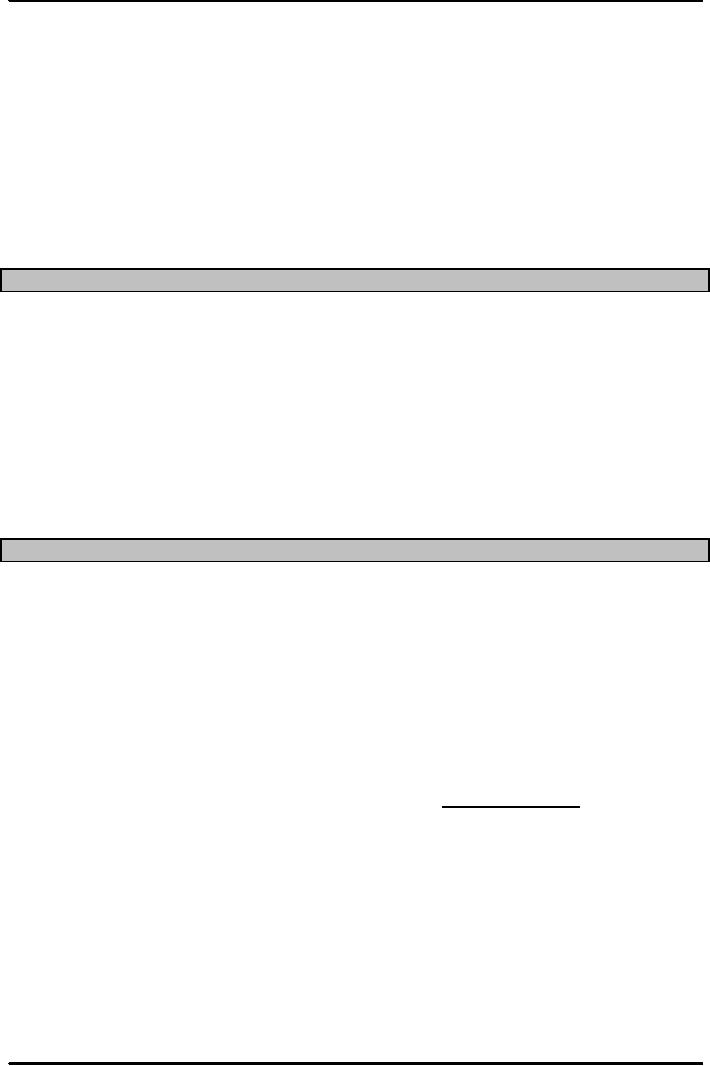 |

Production
and Operations Management
MGT613
VU
Lesson
15
After
completing discussion on product or
service design, organizations end up answering the
questions
relating
to capacity and demand. Since we have
already discussed demand
forecasting, we should
now
focus
on what capacity planning decisions
are. We should also try to
understand the importance of
capacity.
Capacity
decisions are important to all
departments of the organization; an accountant
would be
interested
in collecting cost accounting
information in order to ensure
that correct capacity
expansion
decision
is reached. Similarly a financial
manager would be interested in performing
the financial
analysis
of whether the investment decision is
justified for a plant or
capacity increase. An
Information
Technology
Manager would end up preparing
data bases that would
aid the organization again to
decide
about
the capacity and last but
not the least an operations manager
would select strategies that
would
help
the organization achieve the optimum
capacity levels to meet the
capacity demand.
Learning
Objectives
Capacity
planning lectures deal with
different types of Capacity like
Design, Effective; Utilization
etc
Quite
often the operations manager has to
identify various determinants of
Effective Capacity.
The
manager
has to formulate Strategy
with respect to Capacity
Planning and plans by looking in
to
developing
Capacity Alternatives and studying
Economies of Scale and focusing on
Cost Volume
Relationship
Hopefully
by completing the lecture on Capacity
Planning an Operations Management the
students
would
be able to:-
Understand,
appreciate and explain the importance of
capacity planning.
Discuss
ways of defining and measuring
capacity.
Describe
the factors that determine effective
capacity alternatives.
Discuss
the major considerations related to
developing capacity
alternatives.
Capacity
Planning
Capacity
is the upper limit or ceiling on the
load (demand for a product
or service) that an operating
unit
can
handle.
An
Operations Manager is supposed to
identify tactics and formulate a strategy
in order to answer the
basic
questions with respect to capacity
handling. These questions are:
1.
What kind of capacity is
needed?
2.
How much is needed?
3.
When is it needed?
This
word "Capacity Planning"
reached us a day after the
tragic and life changing
incident of
earthquake
of 8th October 2005. We were exposed to the
idea of capacity limitation
with respect to food,
shelter,
medicines and rescue operations. As a consequence we
also faced the challenge of planning
how
to
overcome this shortcoming.
If
you could recall in our
earlier lectures we talked about
Irregular
variations caused
by unusual
circumstances
such as severe weathers, earthquakes,
worker strikes, or major change in
product
or
service. These irregular variations do
not capture or reflect the true
behavior of a variable and
can
distort the overall picture.
These should be identified and
removed from the data.
There
are two uses for
forecasts. One is to help the Operations
Manager plan the system and
the
other
one is to help him plan the
use of the system.
Planning
the system refers to planning long term
plans about the type of products or
services to
offer,
what facilities and equipment to have,
where to locate and so on and so forth.
Planning
the
use of the system relates to short
range and intermediate range planning
which means
planning
inventory workforce resources,
planning of purchasing and production
activities,
budgeting
and scheduling etc.
66

Production
and Operations Management
MGT613
VU
Importance
of Capacity Decisions
Capacity
decisions impacts ability to meet
future demands, affects operating
costs. These decisions
often
act as a major determinant of
initial costs, as they
involve long-term commitment.
These
decisions
affect competitiveness and gives
ease of management. Capacity Decisions
focus on
globalization
as it is more complex and impacts
long range planning.
Impacts
ability to meet future
demands. Capacity essentially
limits the rate of possible
output.
Having
capacity to satisfy demand
can allow a company of taking advantage
of tremendous
opportunities.
An international automobile manufacturer of
good repute increased its
production
by
working on its capacity
decision after its quality
product received a lot more
demand than it
was
originally anticipated.
Affects
operating costs. We already
know that estimated or
forecasted demand differs
from
actual
demand, so the ideal concept of capacity
matching demand is untrue.
Organizations
should
be willing to take a critical
decision to balance the cost of
over and under
capacity.
Overcapacity
reflects overkill of resources and under
capacity shows a weak
management
philosophy
to make best use of an
available market.
Acts
as a major determinant of initial
costs. It is typical to see
that greater the capacity of a
productive
unit, greater would be the cost.
This does not mean I am
advocating a one to one
relationship
for higher capacity for
production to costs; in fact
larger units tend to
cost
proportionately
less than smaller units.
E.g. Pakistan Steel Mill at Karachi is one
good example,
where
higher costs are misunderstood as the
mills capacity is not being
fully utilized
Involves
long-term commitment. Once
long term commitments of resources have
been taken,
the
difficulty of reversing would
cost more. Indicating a capacity
increase or decrease for
an
organization
set up would mean additional
costs.
Affects
competitiveness. This is very critical,
if a firm has an excessive
capacity or can
quickly
add
capacity, which fact may
serve as a barrier against entry by
other firms.
Affects
ease of management. Capacity
increase or decrease decisions involves
management to
answer
the question of operating the
organization as well as an increase or
decrease in the plant
capacity
Globalization
adds complexity. Capacity
decision often involves
making a decision in a
foreign
country
which requires the management to know
about the political, economic and
cultural
issues.
Impacts
long range planning. Capacity
decisions extend beyond 18 months and
thus get
classified
as long term in nature.
Organizations
often end up making use of
rupees amount in order to show their
capacity ceiling this
unfortunately
needs a constant updating due to
changes in price of raw materials as
well as utilities. A
simple
way out is to reflect the
load or capacity in terms of
unit produced but this has
the limitation that
its
only good for a single
unit and fails in case of
multiple types , designs of units
being produced. A
preferred
type of capacity measurement is to
identify capacity in terms of
availability of input
units.e.g.
like
hospitals are identified to have a
capacity of 200 beds, a
workshop by its man-hours and so on
and
so
forth.
67
Table of Contents:
- INTRODUCTION TO PRODUCTION AND OPERATIONS MANAGEMENT
- INTRODUCTION TO PRODUCTION AND OPERATIONS MANAGEMENT:Decision Making
- INTRODUCTION TO PRODUCTION AND OPERATIONS MANAGEMENT:Strategy
- INTRODUCTION TO PRODUCTION AND OPERATIONS MANAGEMENT:Service Delivery System
- INTRODUCTION TO PRODUCTION AND OPERATIONS MANAGEMENT:Productivity
- INTRODUCTION TO PRODUCTION AND OPERATIONS MANAGEMENT:The Decision Process
- INTRODUCTION TO PRODUCTION AND OPERATIONS MANAGEMENT:Demand Management
- Roadmap to the Lecture:Fundamental Types of Forecasts, Finer Classification of Forecasts
- Time Series Forecasts:Techniques for Averaging, Simple Moving Average Solution
- The formula for the moving average is:Exponential Smoothing Model, Common Nonlinear Trends
- The formula for the moving average is:Major factors in design strategy
- The formula for the moving average is:Standardization, Mass Customization
- The formula for the moving average is:DESIGN STRATEGIES
- The formula for the moving average is:Measuring Reliability, AVAILABILITY
- The formula for the moving average is:Learning Objectives, Capacity Planning
- The formula for the moving average is:Efficiency and Utilization, Evaluating Alternatives
- The formula for the moving average is:Evaluating Alternatives, Financial Analysis
- PROCESS SELECTION:Types of Operation, Intermittent Processing
- PROCESS SELECTION:Basic Layout Types, Advantages of Product Layout
- PROCESS SELECTION:Cellular Layouts, Facilities Layouts, Importance of Layout Decisions
- DESIGN OF WORK SYSTEMS:Job Design, Specialization, Methods Analysis
- LOCATION PLANNING AND ANALYSIS:MANAGING GLOBAL OPERATIONS, Regional Factors
- MANAGEMENT OF QUALITY:Dimensions of Quality, Examples of Service Quality
- SERVICE QUALITY:Moments of Truth, Perceived Service Quality, Service Gap Analysis
- TOTAL QUALITY MANAGEMENT:Determinants of Quality, Responsibility for Quality
- TQM QUALITY:Six Sigma Team, PROCESS IMPROVEMENT
- QUALITY CONTROL & QUALITY ASSURANCE:INSPECTION, Control Chart
- ACCEPTANCE SAMPLING:CHOOSING A PLAN, CONSUMER’S AND PRODUCER’S RISK
- AGGREGATE PLANNING:Demand and Capacity Options
- AGGREGATE PLANNING:Aggregate Planning Relationships, Master Scheduling
- INVENTORY MANAGEMENT:Objective of Inventory Control, Inventory Counting Systems
- INVENTORY MANAGEMENT:ABC Classification System, Cycle Counting
- INVENTORY MANAGEMENT:Economic Production Quantity Assumptions
- INVENTORY MANAGEMENT:Independent and Dependent Demand
- INVENTORY MANAGEMENT:Capacity Planning, Manufacturing Resource Planning
- JUST IN TIME PRODUCTION SYSTEMS:Organizational and Operational Strategies
- JUST IN TIME PRODUCTION SYSTEMS:Operational Benefits, Kanban Formula
- JUST IN TIME PRODUCTION SYSTEMS:Secondary Goals, Tiered Supplier Network
- SUPPLY CHAIN MANAGEMENT:Logistics, Distribution Requirements Planning
- SUPPLY CHAIN MANAGEMENT:Supply Chain Benefits and Drawbacks
- SCHEDULING:High-Volume Systems, Load Chart, Hungarian Method
- SEQUENCING:Assumptions to Priority Rules, Scheduling Service Operations
- PROJECT MANAGEMENT:Project Life Cycle, Work Breakdown Structure
- PROJECT MANAGEMENT:Computing Algorithm, Project Crashing, Risk Management
- Waiting Lines:Queuing Analysis, System Characteristics, Priority Model